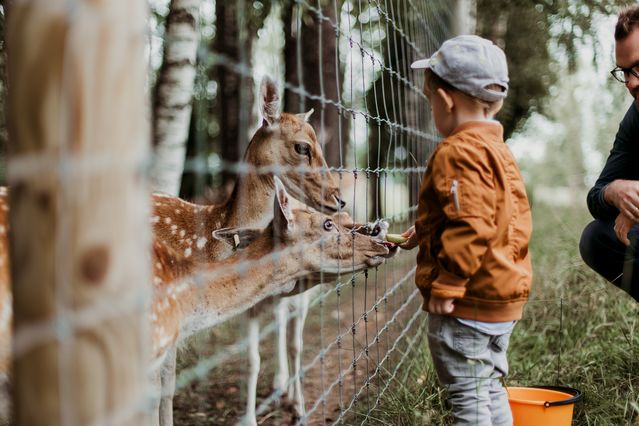Altruism
How Do You Teach Kids About Giving?
Generosity may be as essential to health as diet, exercise, and sleep.
Posted February 10, 2019 Reviewed by Jessica Schrader
Lately I’ve been asking myself, “How can I teach my kids to be generous?” I started to consider practical steps, and then realized I had forgotten a more important question. The first question I need to ask as a parent is about me: “How can you be generous to others?”
Questioning my own behavior is crucial because it helps avoid two common mistakes parents make. First, acting like this is a skill they need to learn but doesn’t apply to me. It doesn’t help at all if I act selfishly toward others and then preach at them about giving freely. Second, acting like generosity is related to one concrete thing, like charity, and ignoring that generosity is a lifestyle.
What is generosity anyway? Why does it matter to kids?
Notre Dame’s Science of Generosity Project defines generosity as “giving good things to others freely and abundantly.” Someone like that sounds like a nice person, and I would love for my kids to grow up to be nice people. But how does generosity affect happiness? Generosity is associated with better mental health, and it is linked to happiness. “And even small acts of kindness, like picking up something someone else has dropped, make people feel happy," (Allen, 2018.)

When we think of generosity, most often we think of spending money on others, but that’s only part of it. Becoming a generous person involves being helpers, sharing our time, paying attention to people and encouraging them, even being emotionally available. Do you see what’s happening with this list? Remember that the most powerful way children learn from parents is by modeling. That means they do what we do, not what we say.
And of course, parenting also plays a role in cultivating generosity. Some studies have found that various parenting practices—particularly role-modeling and discussing generosity—may help children grow up to be more generous adults.
How can you be generous to others?
How do I teach my child to be generous? First I must ask myself, “How can you be generous to others? How can you be generous in your interactions with your family? How can you be generous in the way you interact with non-family members in front of your family?”
It’s a great idea to discuss generosity at a family meeting and make your values as a family explicit. Ask your child “How does giving make you feel?” Don’t be afraid to acknowledge all the feelings your child may name. Perhaps they might say, “I like sharing, but I don’t like it all the time. Sometimes I want my stuff and sharing it makes me feel bad.” This is a great time to ask them, “Why is giving good for us?” Explain what it does for happiness for themselves and everyone around them. Explain why your family values it. Then strategize steps they can take to be generous.
A conversation about generosity is a fantastic opportunity to talk about boundaries. “Share” is the first command word kids learn in their lives that has to do with generosity. They hear it constantly in daycare or preschool. All too often it is presented as a requirement. When I talk with kids about this, they usually express sharing as a black and white rule. They get the message that if someone wants what they have, they need to give it to them. The message is “what’s yours is mine.” Yikes!
Without understanding ownership and personal rights, there is no true sharing or generosity. If a child is taught to share automatically without any consideration of their own feelings, they are being taught to be taken advantage of.
True generosity means that I give of what is mine, by my own choice. And that is where the joy and the character-building come from. So first, I must understand what is mine and what is yours.
Try this idea: when our kids were young, we made a rule in our house that when they get something new, they are not required to share it the first day. Then, we encourage sharing, but it must go both ways. When they were little there was often fighting over toys. If they could not sort out a sharing agreement, we would set a timer and take turns with the item in question. Now that they are elementary school aged, they tend to negotiate well with each other (most of the time).
Why is generosity good for you?
So often, what we teach our kids has to do with our view of the world and our view of what it means to be human. Many of us were taught that humans are selfish by nature. We were taught this as a fundamental principle of capitalism. We were taught this as a principle of evolution when we were told selfishness was the way to ensure the survival of the fittest. The strongest took the good stuff and survived, and the suckers died.
However, the science of evolutionary sociology has called much of this into question. In fact, pro-social behavior has been shown to have survival value, because groups survive together. It even gives people an advantage with mating, making them more attractive to potential partners. Today, generosity is linked to benefits in the workplace and more contentment in romantic relationships. People who practice generosity live longer, and enjoy better physical and mental health.
Generosity goes both ways, from adults to children and children to adults. It turns out that in societies that are not technologically advanced, the generosity of the children was essential to the survival of the community. When children carry water, help prepare food, or care for and teach the other children, the whole community survives more.
“This is not to suggest that generosity is more 'natural' than selfish-ness; rather, evidence suggests that humans have both selfish and generous propensities. In other words, generosity is not simply a cultural construct. While our selfish instincts may get more attention, numerous studies have shown that our instincts for generosity also have deep evolutionary roots.” (Allen, 2018)
Is there a biological basis for generosity?
Many animals have been found to be cooperative or even downright generous at times, including monkeys, chimpanzees, army ants, bees, fish, certain birds, and vampire bats. Yes! Vampire bats will share blood with other bats who are not related to them, thus preventing starvation.
Biologically, the brain shows stimulation in the reward circuits (the mesolimbic area) when we act generously. It feels good to be generous, even when we are forced to do it, which is important for parents to know. I can indeed force my kids to participate in generous behaviors as part of their training, and this will feel good to them. Then, when they do it themselves, it will feel even better. (Remember to respect their boundaries.)
The orbitofrontal cortex of the brain is also triggered when we behave generously. This area of the brain activates for rewards, but also may have a part in how we assess the decision we just made. One study even suggested that this area may reward us when we do things that are fair, even when it goes against our own interests. We seem to be set up to understand what is fair for the group, and see that as good for us personally.

Research has demonstrated that generosity and helping behavior is spontaneous in children as young as 14 months, and can be demonstrated throughout their development. Small encouragement from parents helps them develop this even more.
If vampire bats can be generous, I can raise my kids to be generous.
Our kids are born with wiring that predisposes them to generosity, but our parenting has an impact. In this case, not only in our behavioral modeling, but also in the safety and comfort our kids find in their relationship with us. Researchers at the University of Kansas believe that the more secure you are in your attachment to others, the more generous you will be.
We try so hard to bring happiness to our children, and we love to do it with treats. We delight in giving our children gifts, fun activities, and yummy treats. But maybe an even better way to make our children happy is to teach them to give.
“One study found that toddlers younger than 2 exhibited more happiness when giving treats to a puppet than when receiving treats themselves and were even happier when they gave some treats from their own bowl (versus giving the puppet a newly discovered treat).” (Allen, 2018)
I thought generosity was a good idea because it was part of being a good person. Yet, generosity has been tied to better physical health, longer life, improved mental health, and greater happiness. Maybe this pediatrician should add generosity to the fundamentals we discuss at check-ups: sleep, good diet, exercise, and generosity.
This is Part 1 of 2. In How Do I Teach My Kids to Give Back?, I'll give five things to try to get our kids involved with charity and giving.
©Alison Escalante, M.D.
References
Allen, Summer. (2018). The Science of Generosity. UC Berkeley, CA: John Templeton Foundation.




